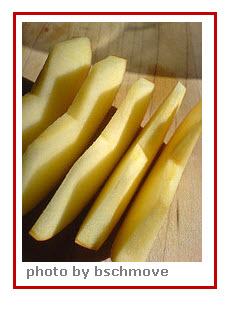What does macerate mean?
I now have a new word to add to my very limited vocabulary. While I found the word “macerate” in a cooking recipe, it so wonderfully describes what happens to slices of fresh apples when covered with sucrose (table sugar).
Covering sliced fresh apples with table sugar causes the apples to macerate.
The maceration process causes the fruit to soften, to break into parts, and to weaken or to become thin.
Sugar causes apple slices to macerate because sugar is hydrophilic, which means it attracts water (water loving). It might be said that the sugar sucks the water out of the fruit, thus the water is separated from the apple slices and they shrink.
There is a lot of truth in saying sugar sucks the water out of the apple, but a more scientific descriptive is that the water moves out of the cells as a result of osmosis.
Osmosis is the movement of water through a membrane from the side with a low concentration to the side with a high concentration.
In summary, when slices of apples are covered with sucrose, water molecules inside the cells of the apple move through the cell membranes and mixes with the sugar to form a sugar solution. The water continues to leave the apple until the concentration of the solution inside the apple cells is equal to the concentration of the sugar solution outside the the cells or until there is no more water inside the cells.
Discover This For Yourself
With adult assistance, peel and cut an apple into small pieces. Place the apple pieces in a measuring cup. Record the volume of the pieces of fruit. You want an estimate, so the spaces between the pieces will not affect the results.
Pour the apples pieces into a bowl, and then cover the pieces with sucrose (table sugar) equal to the same volume of the apples.Thoroughly mix the sugar and apple pieces.
For example, if you have 1/2 cup of apple pieces, cover the apple pieces with 1/2 cup sucrose.
Cover the bowl, and then set the bowl where you can observe it periodically for 4 or more hours. When you lift the cover of the bowl, make note of how dry the sugar is.
Sugar is used to preserve foods, including fruit and meat because the water-loving sugar tries to draw-in any water from its surroundings.This includes any microbe near-by. High concentrations of sugar will “suck” the water right out of the microbes. The microbe dehydrates and dies. Yes, this is osmosis and it can be the death of bacteria and mold.
 |
Food and Nutrition for Every Kid |